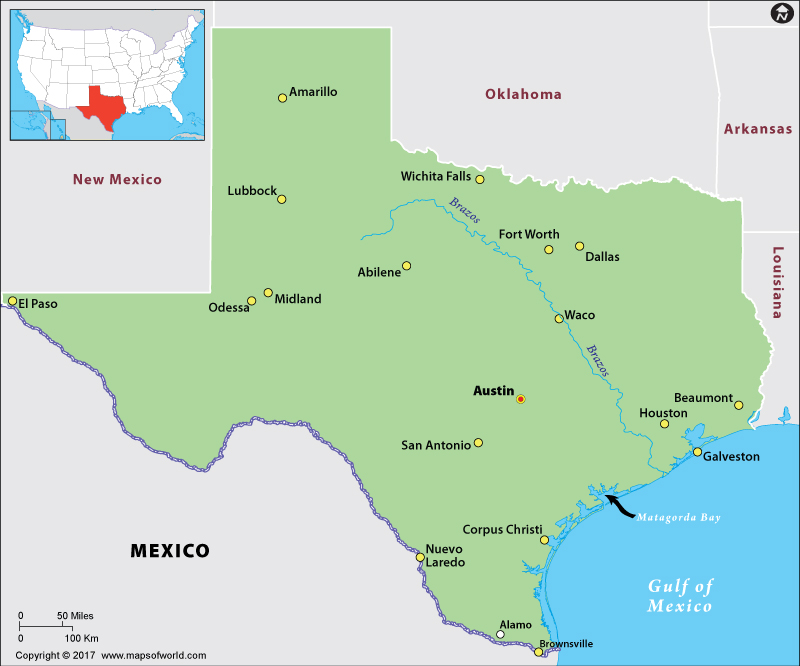Why is Texas Called the Lone Star State?

Texas, a state located in the southern part of the United States, is a big state with lots of different things to see and do. From wide open spaces to busy cities, it’s full of history. In this article we will learn about why it is called the lone star state, interesting facts and more.
Texas – A Lone Star State
Texas got its nickname, the “Lone Star State,” because of its special history. Back when Texas was its own country, it used a single star as its symbol. This star stood for Texas standing strong on its own. Even after joining the United States, that lone star still represents Texas’ independence and pride. The lone star symbol is also found in the state’s flag and seal.
Lone Star Flag
Three official flags flew over the Republic of Texas during its history. The third, adopted in 1839, is now known as the Lone Star Flag. The flag of the Republic of Texas featured a single star, symbolizing Texas as a single, independent nation. The flag represents the pride, defiance, Independence and go-it-alone spirit still part of Texas’s way of life.
History of Texas
- Indigenous History – It was initially home to Native American tribes like the Comanche and Apache.
- Spanish Colonial Period (16th-19th centuries) – In the early 1500s, Spanish explorers arrived in Texas. The missions and presidios were established to convert Native Americans and protect Spanish interests. It followed the French Rule.
- Mexican Texas (1821-1836) – In 1821, Mexico gained independence from Spain, and Texas became a part of Mexico. However, many American settlers moved to Texas, a Mexican territory. They didn’t always follow Mexican laws, which caused tensions.
- Republic of Texas – In 1836, Texas declared independence from Mexico and formed the Republic of Texas. This led to a war between Texas and Mexico, which Texas won. Texas then joined the United States in 1845 as the 28th state.
- Civil War and Reconstruction (1861-the 1870s) – Texas later seceded from the Union in 1861 and joined the Confederacy during the Civil War. After the Civil War, Texas was readmitted to the Union in 1870.
- Post-Reconstruction (late 19th-early 20th century) – Texas experienced growth in industries such as cattle, oil, and railroads, leading to economic development and urbanization.
- Texas modernizes (1945-present) – After the Civil War, Texas underwent reconstruction and experienced rapid growth and development. Today, Texas is known for its diverse economic culture, rich history, and large cities like Houston and Dallas.
Official Recognition As Lone Star State
In 2015, the nickname “The Lone Star State” was officially designated to Texas. The state has, however, has this for more than the past two centuries. The Lone Star is a symbol that has represented the state through the years. The single star on the Texas flag represents this concept of being a “lone star” among the states. This emblematic lone star became synonymous with Texas and remains a prominent symbol of the state’s identity.
Interesting Facts about Texas
- Texas is the second-largest state in the United States by area and population.
- Texas is the only state to have been a part of six different nations (Spain, France, Mexico, the Republic of Texas, the Confederate States of America, and the United States).
- The state’s name comes from the Caddo word “Tejas” meaning “friends” or “allies“.
- The famous slogan “Remember the Alamo!” refers to the 1836 Battle of the Alamo, a key event in the Texas Revolution.
- Texas boasts a diverse geography, encompassing deserts, forests, mountains, and coastline.
- The state is a significant producer of oil, natural gas, and agriculture, particularly cattle, cotton, and citrus fruits.
- Texas has a robust cultural identity influenced by Spanish, Mexican, and Western heritage.
- The capital of Texas is Austin, known for its music scene, and the largest city is Houston.
- Texas is home to several professional sports teams, including the Dallas Cowboys (NFL), Houston Texans (NFL), Houston Rockets (NBA), and San Antonio Spurs (NBA).
Relates Links